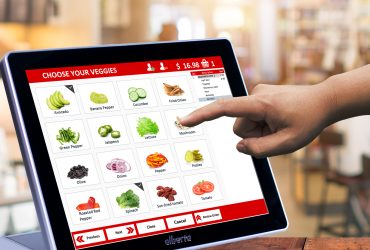
Customers spend more at food ordering kiosks
Have you ever walked up to a fast food counter or pulled up to the drive-thru speaker with half a dozen customers waiting behind you? There’s a bit of pressure that comes with your place in line. You’ve waited for your turn, and you know those behind you would appreciate a speedy order from you. In solidarity with your line mates, you order your usual for that chain and decline any of the additional items the cashier offers you.
What if you didn’t have that pressure when you order? Would you spend more money? According to a Harvard Business Review study, you probably would. At a food ordering kiosk, you can customize your order and treat yourself to something extra without risking judgment from a store employee.
McDonald’s continues food ordering kiosk roll out
Fast food giant McDonald’s has experimented with food ordering kiosks for more than a decade. They’ve had some amazing results. Very early on, one store experienced a 30% increase in the average sale. More recently, McDonald’s experienced 20% of customers who did not order a beverage but were then offered one at the end of their kiosk order wound up purchasing one. That’s a much better batting average than cashiers have, and the kiosk never forgets to attempt the up-sell.
Today, McDonald’s continues to roll out food ordering kiosks. If you’ve been inside one of their stores recently, chances are you’ve seen their kiosks. By 2020, McDonald’s expects to install the kiosks in most of its 14,000 locations. The company anticipates sales to increase five to six percent in the first year kiosks are available at a location.
Other fast food, fast casual, and casual restaurants have followed suit with ordering kiosks. Additionally, these companies have developed mobile ordering apps. In 2015, Taco Bell said its mobile orders were 20% higher on average than orders placed with human cashiers.
Psychological aspects of kiosk ordering
As with any good retail technology, industrial psychologists anticipate, test, and study the ways humans interact with food ordering kiosks. The applied psychology is fascinating.
As mentioned above, food ordering kiosks never forget to up-sell customers with a larger size, beverage, dessert, or whatever an algorithm deems most appropriate. When humans neglect to upsell because of a lunchtime rush or plain old forgetfulness, the software running the kiosks never forgets to offer the extra item a customer may buy.
Kiosks can feature higher priced or higher profit margin items to boost sales. Though the longstanding tricks to designing a paper menu or overhead menu board still apply, kiosks can guide customers in ways that vary based on what a customer adds to an order.
Customers know kiosks won’t judge them based on their order. Most people are more likely to order a triple cheeseburger from a kiosk rather than from a human cashier. Customers ordering through a kiosk do not risk a side-eye glance of disgust from a judgmental cashier.
For store managers and employees, the downside of food kiosk ordering is customers are more likely to customize an order. Ordering extra pickles at the tap of a finger is easier than saying the order to a cashier. Many times, the kiosk’s user interface encourages customization. For a burger, kiosks often list all the toppings and make it easy for the customer to add or remove toppings. It’s great for the customer’s perception of value to the company, but it can backlog a kitchen if the staff are not prepared for it.
Installing kiosks in your retail outlet
Though food ordering kiosks have made their biggest mark on the fast food industry, their application spreads to all retail environments. To see how kiosks can fit into your retail business, set up a demonstration with Alberta Payments + Technology.

